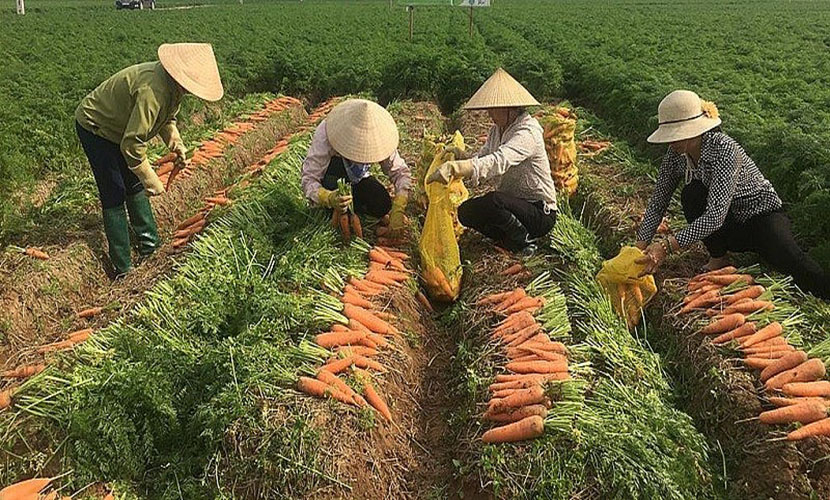
Cam Giang district (in Hai Duong province) is the capital of Vietnam’s carrot. Mr Toi, a farmer, who has understood the value of carrot and possessing effective cultivation techniques. Therefore, his family has traveled extensively to find abandoned farmland to rent and turn into carrot-growing areas.
By rough estimate, his family now manages nearly 100 mau of carrot fields stretching from Hai Duong to Thai Binh. They can generate billions of VND annually for his family.
In the fields in Thanh Mien district, Hai Duong province, this season sees vast stretches of green carrot crops. The total area of about 40 mau here is cultivated by Mr. Toi’s family.
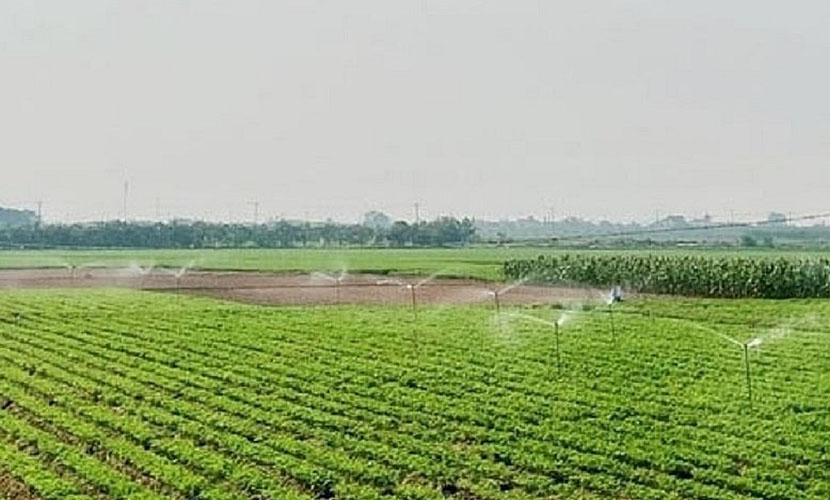
Vietnamese carrot farms
According to research, this field used to be mostly abandoned, overgrown with weeds as tall as a person. Despite the fertile soil, the low economic efficiency of rice farming made locals lose interest. Since Mr. Toi’s family arrived, his family has transformed it into the largest Vietnam’s carrot growing area in the district.
The expansive carrot fields are not Mr. Toi’s first venture in relocating carrot farming to new land. This journey has followed him for over a decade.
His first relocation of Vietnamese carrot farming began in 2002. At that time, his family rented more than 10 mau of land outside the Thai Binh River in Tu Ky District. With diligent hands and determination, Mr. Toi and his wife quickly turned the land into a profitable carrot farm. Thanks to the fertile soil, their carrots were of high quality and attracted traders from far and wide.
“Ten years attached to that new land provided my family with a stable and comfortable life. When our finances improved, I considered expanding production. If Dai Dong commune had not repurposed that land for a VAC (Garden-Pond-Livestock) model, I might still be farming there,” Mr. Toi shared.

Harvesting Vietnam’s carrot
After handing the land back to the local authorities for conversion, the couple returned to their hometown to continue Hai Duong’s carrot cultivation. However, with only 6 sao (approximately 2,160 square meters) of farmland, they faced limitations. Determined to expand, the couple decided to “relocate” carrots to new lands.
In 2018, fate brought Mr. Toi to Hung Ha District, Thai Binh Province. There, he rented fields from hundreds of households, totaling 50 mau. With the land secured, he mobilized all of the family’s machinery to renovate and level the fields. Besides using his savings, Mr. Toi borrowed over 2 billion VND to invest in the land. With a big vision and bold actions, he implemented synchronized mechanization, from soil preparation to harvesting.
By 2022, Mr. Toi sought out land in Hong Phong commune, Thanh Mien district to continue his carrot cultivation journey. He transformed the once-wasteland into the endless fresh carrot fields seen today. Recently, five mau of early-planted carrots yielded about 25 tons, sold at 4,000 VND per kg. Despite heavy rains affecting this initial area and lowering the quality, nearly 40 remaining mau are expected to yield better results thanks to improved weather.
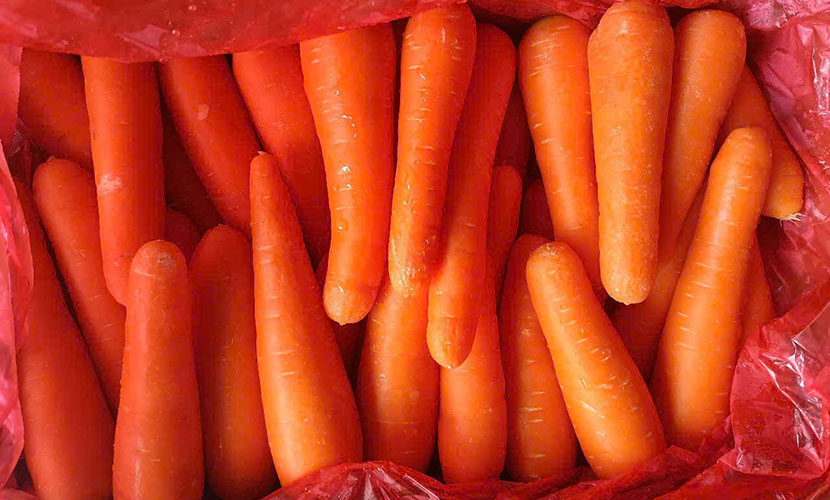
Vietnam’s carrot for export
However, the journey to expand carrot farming into new territories has not been without hardship. One of the most challenging moments was during the COVID-19 pandemic. In that year, his 50 mau of carrots in Thai Binh were ready for harvest when the outbreak hit. With Hai Duong as the national hotspot, the province went into lockdown.
Unable to transport the harvest back to Duc Chinh commune for processing, dozens of tons of carrots were left piled in the fields. Distressed over the losses, Mr. Toi and his wife were sleepless for days. Although authorities from Hai Duong and Thai Binh helped with purchasing the carrots, the prices had dropped dramatically. The 2020 carrot crop brought almost total losses to the family.
Besides market fluctuations, weather and soil conditions are major obstacles in agriculture. Each time they moved the carrot crop to a new area, Mr. Toi and his wife faced sleepless nights. Being outsiders, they could not always identify which plots had good or poor soil.
The 40+ mau of newly rented land in Hong Phong commune is a prime example. Though part of the same field, the land varies in elevation and quality. Even after over three months of field and canal renovation, Mr. Toi faced difficulties. In the first planting season, nearly a quarter of his carrot crop had to be destroyed because the carrots split open after only a short growth period, making them unsellable.
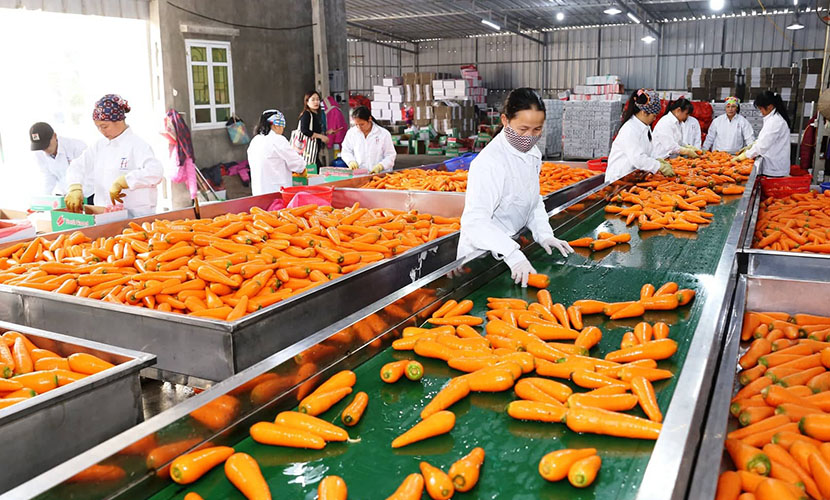
A factory of Vietnamese carrot
Despite the challenges, the couple persevered in improving the soil. Any plot producing substandard carrots was cleared, leveled, and enriched with nutrients and organic compost.
To create the lush green carrot fields seen today, all four members of Mr. Toi’s family, along with 70 local workers, labored 12 hours daily regardless of rain or scorching sun. In addition to providing a stable income for his family, Mr. Toi’s work has helped eliminate abandoned farmland and improved the livelihoods of many locals by providing stable employment.
Notably, the 40+ mau of carrots grown by his family in Hong Phong commune have now been selected by local authorities for development into an OCOP (One Commune One Product) certified product.
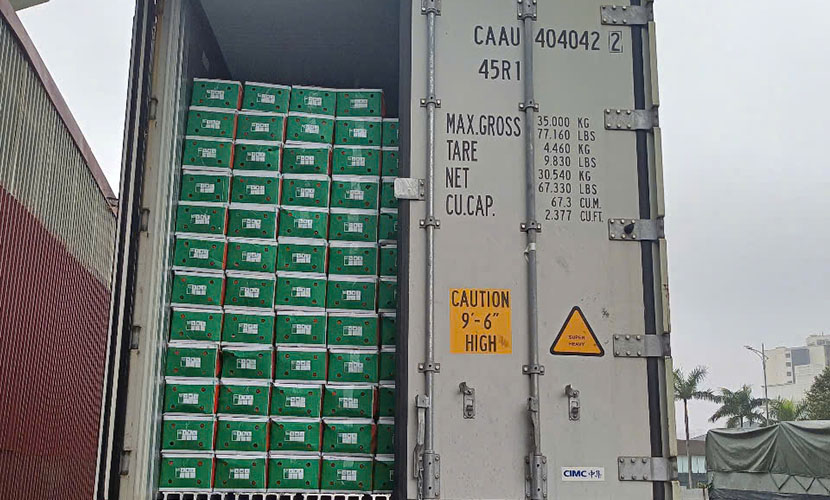
Loading fresh carrot for export
Currently, all of Mr. Toi’s carrot fields are fully mechanized. He has also invested billions of VND into automatic irrigation and drainage systems. Furthermore, he has mastered organic fertilization and the use of biological products, making his carrots suitable for export.
In the 2021 winter crop alone, he exported over 30 tons of carrots to foreign markets, accounting for more than 40% of his total yield. With this year’s carrot season approaching harvest, a bumper crop is anticipated.
The carrot has not only fulfilled Mr. and Mrs. Toi’s dream of prosperity but also helped unlock the agricultural potential of each locality they’ve touched. As a result, his farming model has received strong support from local authorities, a firm foundation for elevating the reputation of Hai Duong’s carrots.
Vietnamese source: https://thuonghieusanpham.vn/ong-nong-dan-dua-ca-rot-di-khap-noi-chinh-phuc-dat-hoang-gio-co-trong-tay-tien-ty-50001.html
